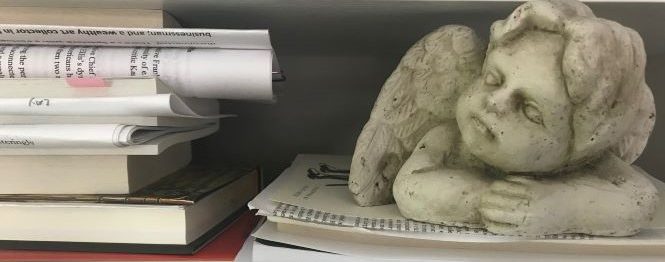 In the early 1840s, a young Walt Whitman worked as a journalist and wrote average fiction, poetry and editorials that, according to debut author J. Aaron Sanders, were “overwrought, sentimental, and derivative.” Not much later, in 1855, Whitman wrote Leaves of Grass, poetry that upended the classical metered schema and now holds a place of significance in the canon of literature. Sanders takes a fictional pen to imagining what those gap years could’ve looked like. In doing so, he’s created a fast-paced, compulsively readable historical mystery set in 1843 New York City with Whitman as protagonist and sleuth. It may feel odd to think of the esteemed 19th century literary figure as a young journalist pursuing truth in a murder case, but it works, and tremendously well.
In the early 1840s, a young Walt Whitman worked as a journalist and wrote average fiction, poetry and editorials that, according to debut author J. Aaron Sanders, were “overwrought, sentimental, and derivative.” Not much later, in 1855, Whitman wrote Leaves of Grass, poetry that upended the classical metered schema and now holds a place of significance in the canon of literature. Sanders takes a fictional pen to imagining what those gap years could’ve looked like. In doing so, he’s created a fast-paced, compulsively readable historical mystery set in 1843 New York City with Whitman as protagonist and sleuth. It may feel odd to think of the esteemed 19th century literary figure as a young journalist pursuing truth in a murder case, but it works, and tremendously well.
Speakers of the Dead: A Walt Whitman Mystery opens with the public hanging of Whitman’s friend, Lena Stowe, who’s convicted of murdering her husband, Abraham. Our protagonist knows neither would have done what New York City officials and police put forth as fact – that Abraham murdered his mistress Mary Rogers and tossed her body in the Hudson River after he learned she was pregnant and botched the abortion – and that Lena murdered her husband in a jealous rage. Even to the public, it appears to be a clear-cut case, but Whitman believes Abe’s death is connected to the resurrectionists, grave robbers with whom Abe conducted business.
Abe and Lena ran a medical college for women. Like all medical school directors at the time, they needed cadavers for anatomical dissection. The only way to get the cadavers was via Samuel Clement, a strongman in the criminal bodysnatchng trade. Adding to the difficulty for the Stowe’s medical school, the practice of dissection was considered sacrilegious, causing morally outraged people to protest at their front door. It was believed a dissected body could not resurrect to heaven. Abe attempted to push through legislation that would provide a legal way for medical colleges to acquire cadavers, which would put Clement out of business. That, according to Whitman, screamed motive for Clement to murder Abe. As Whitman travels down the rabbit hole of discovery into this underground world of the resurrectionists, he puts his life at risk, and that of his editor and dear friend, Henry Saunders.
Speakers of the Dead includes historical figure Elizabeth Blackwell, the first woman to graduate medical school in the United States, and also the famous writer Edgar Allan Poe, who in reality attempted to solve the true, sensational New York City Mary Rogers murder with his stories. In the Author’s Note to the book, Sanders writes: “The problem for Poe was that, by the time he published the trilogy of stories, new theories about the death of Rogers had emerged, rendering Poe’s own theories useless.” Sanders cleverly imagines a very drunk Poe collaborating with Whitman one night in a cemetery in a scene that quickly becomes an entertaining hot mess.
Speakers of the Dead: A Walt Whitman Mystery may cause Whitman scholars to roll their eyes, but for the rest of us, it’s colorful mystery reading filled with secrets and gross misdeeds that keep the light on well into the night. Whitman’s romantic interest in Henry Saunders adds emotional drama, while his fearless approaches toward corrupt politicians and criminals adds edginess. Meanwhile, public protests rage before the Stowe’s medical college where Elizabeth Blackwell and other female medical students continue to study after the Stowe’s deaths, and they fear for their lives. Along the way, Mr. Whitman, journalist, poet and sleuth, gets closer to the truth of what really happened to Mary Rodgers and Abraham Stowe, during his energetic, vilifying and surprising investigation.

Thank you for the review. ….
LikeLike